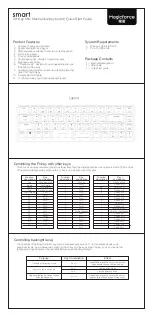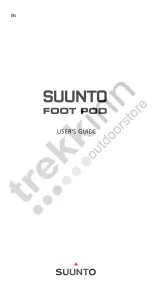
4-14
Control Sources
Main Control Source List
126
Release State (Rel State)
This unipolar control source switches to +1 when a note is released, and stays on
until the note has completed its release (faded to silence), then it switches to 0. It
will stay on if a note is sustained, even if its trigger (key, string, whatever) is
released.
127
ON
This generates a constant control signal value of +1.
128
-ON
This generates a constant control signal value of -1 (the numeric entry 128 selects a
value of
OFF
in the MIDI Control Source list).
129
GKeyNum
Uses the key number (global) to modify whatever it is patched into. Higher notes
will have a very different effect than will lower notes. Users can use this new Source
to control any K2661 parameters, or to scale amplitude or pitch.
130
GAttVel
This is updated every time you strike another key (kind of a multi- trigger function).
In addition to enabling (triggering) layers from any controller (works like an on/off
switch), you can set the assigned controller’s threshold (value, or range of values
from 0-127), thus de
fi
ning the controller’s active range where it will enable the
layer.
For example, you could create a 32-layer nylon guitar in which each layer is
assigned to a different VAST algorithm and each layer is enabled by discrete narrow
velocity ranges. This would produce 32 different sounding layers with 32 cross
switch points emulating a picked guitar where no two attacks are exactly alike. If
the layers' velocity ranges were very close together yet not overlapping, you could
create very subtle nonrepeating changes. This kind of power usually eludes most
sample playback devices, as this technique uses only one layer of polyphony, due to
cross switching versus cross fading.
131, 132
GHiKey, GLoKey
These control sources work the same as GKeyNum except that they track the
highest key currently held and the lowest key currently held respectively. By using
one of these as the only source for pitch tracking, you can create monophonic-like
layers within a polyphonic program.
Summary of Contents for K2661
Page 18: ...2 4 LFOs LFO Shapes...
Page 34: ...3 16 DSP Algorithms...
Page 54: ...5 4 MIDI Note Numbers Note Numbers for Percussion Keymaps...
Page 72: ...7 10 System Exclusive Protocol K2661 System Exclusive Implementation...
Page 82: ...9 4 Upgrading Sample Memory Choosing and Installing a SIMM for K2661 Sample Memory...
Page 334: ...10 252 KDFX Reference KDFX Algorithm Specifications...
Page 340: ...11 6 Glossary...
Page 382: ...12 42 Triple Modular Processing Alphanumeric Buttonpad Entries for DSP Functions...
Page 392: ...B 6 SysEx Control of KDFX MSB and LSB...
Page 442: ...D 20 Contemporary ROM Block Objects Controller Assignments Contemporary ROM Block...
Page 490: ...H 12 General MIDI Standard Mode Controller Assignments...
Page 492: ...I 2 Live Mode Objects Live Mode Programs...
Page 498: ...K2661 Musician s Reference Index...
Page 500: ......
















































